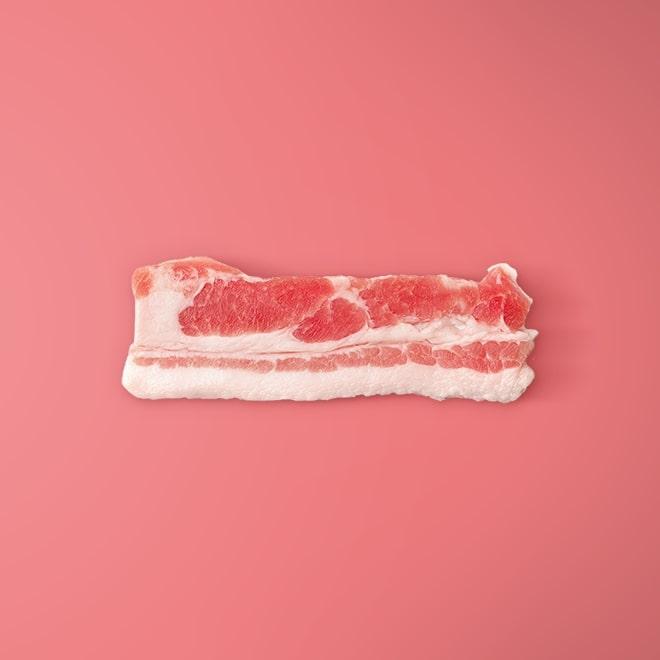Bacon




Bacon has been found to be one of the oldest processed meats in history. It is believed the Chinese started conserving pork bellies by salting them around 1500 B.C. Today more than half of all American households (53%) have bacon on hand at all times.
Bacon refers to pork that has been cured with salt, but it can come from several different parts of the pig, including pork belly, side cuts, pork cheeks (jowls), and shoulder. Bacon is sometimes smoked, with the type of wood(s) used to smoke affecting the flavor along with the quality of pork and curing time.
American-style bacon comes from the pork belly and is cured and then smoked. Outside the US, this style of bacon is referred to as “streaky bacon,” due to the large amount of fat.
Canadian bacon (or back bacon in Canada) comes from a much leaner part of the pig, the boneless pork loin, and it can be smoked or unsmoked.
Once bacon is opened, it needs to be wrapped tightly in plastic or foil to keep air out. It’ll keep like this for about 7 days.
Freeze unopened bacon by wrapping it in an extra layer of foil or other freezer wrapping. Be sure to push all the air out of the package as you wrap it, and use within a month.
To thaw frozen bacon, place it in the refrigerator until completely thawed. Try not to defrost in the microwave, and never cook from frozen.
Rendered bacon fat can last for weeks if stored properly in an airtight container in the fridge.
Take raw bacon and curl it up in a muffin or cupcake tin, then crack an egg into the middle of each one and bake it in the oven for an on-the-go breakfast!
Make a sweet and savory breakfast with Pillsbury cinnamon rolls by unrolling them, adding a slice of bacon, and then rolling back up to bake.
To make roasted meats like chicken, pork, and turkey extra juicy, use bacon strips to naturally baste chicken by laying slices across the top of the meat. Remove for the last 15 minutes of cooking to allow the meat to brown.
TMI Foods, a UK company, has found a way to use bacon fat and grease to manufacture a low emission, eco-friendly, all-natural, bio-diesel fuel. This efficient, low-cost fuel can be used to run anything from motor vehicles, turbines and and even high powered generators.
The amazing aroma that is created when bacon is baked is derived from 150 organic compounds within the meat. As heat is applied, sugars, amino acids, and fat in the meat undergo the Maillard reaction, which creates the molecules released in that tasty aroma.
Add a little water to a pan of bacon before you start cooking to keep the grease from spattering. The water will cook off and help the bacon cook evenly. Always cook bacon over low heat for even cooking.
Perhaps the simplest way to cook bacon is in the oven - no need to turn or flip! Simply arrange in a single layer on a silpat or parchment paper in large, shallow baking pan. Bake at 400°F to your desired crispness and then drain on paper towels.
Always save rendered bacon grease - just store it in the fridge. It can be easily swapped for butter or oil for frying eggs, sauteing vegetables, cooking mirepoix, making cornbread, you name it!
American bacon is known to be quite high in monounsaturated fat, saturated fat, sodium, and cholesterol. Leaner Canadian bacon on the other hand has a third of the total fat of American bacon.
Bacon is a great source of protein at nearly 3 grams per average slice.
Corrections or improvements? Email us at
content@sidechef.com